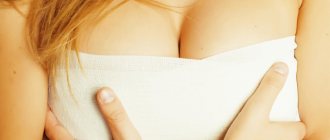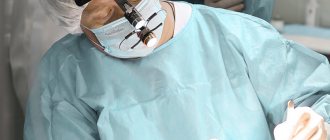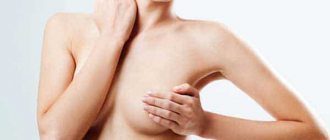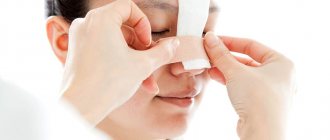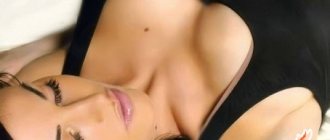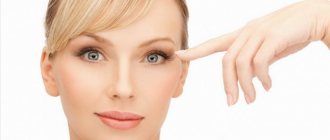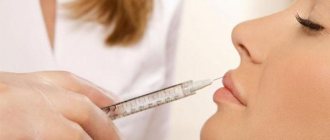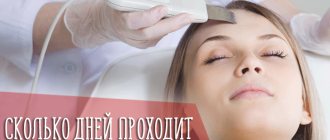Stages of rehabilitation
Carrying out mammoplasty is a fairly serious surgical intervention, performed under general anesthesia, accompanied by tissue incisions and trauma when placing implants, followed by suturing. Therefore, the rehabilitation process takes place in stages, with certain restrictions and prohibitions over several days or weeks. The patient needs to strictly monitor her general well-being, monitor the condition of the postoperative scar and follow all the recommendations of the plastic surgeon. This is necessary so that expectations regarding the desired shape and size of the breast are met, and the recovery process goes according to plan.
In general, the first (postoperative) rehabilitation period lasts up to two months, full recovery occurs within 6-12 months.
How long does rehabilitation take?
Recovery from mastopexy takes about three to five months. During this time, tissue healing occurs and a new bust position is formed. The timing of regeneration is individual and depends on the characteristics of the patient’s body. The speed of recovery can be affected by age, health status, the presence of diseases, hormonal indicators and the speed of recovery processes, which is genetically determined.
Vertical breast lift with implants, performed at the Osnova clinic.
To speed up the recovery process, the patient must strictly follow all recommendations and observe the prohibitions of her operating surgeon. Breast lift and rehabilitation after it are not as complicated as other types of plastic surgery, but this does not mean that you can be irresponsible with your doctor’s prescriptions. The final result is summed up after 9-12 months, when all restoration processes are completed and the breasts take their final shape and position.
Rehabilitation after mammoplasty by day
The patient spends the first day after the operation in the ward under the supervision of a doctor and nurses, recovering from anesthesia. An increase in temperature is possible as a reaction to incisions and tissue injury, pain. Antipyretics, painkillers, and antibiotics may be recommended to prevent wound infection. After the operation, a semi-lying or sitting position is required; by the end of the day you can stand up and walk. You can drink 3-4 hours after anesthesia, eat food after 5-6 hours.
On the second day, the doctor conducts an examination, removes drainages and makes dressings. In some clinics, the patient is allowed to go home by the end of the second or third day with positive dynamics of recovery.
The patient remains at home for the third or fourth day. Physical activity is prohibited; walking around the house is acceptable.
On the fifth day, a visit to the clinic is required for a follow-up examination by a surgeon and assessment of the recovery process, dressing, and suture treatment.
From 6 to 11 days after surgery, there is a smooth return to normal life with a number of restrictions. Physical activity, sports and heavy lifting are prohibited.
On the 12th day, the doctor conducts an examination again, monitoring the process of restoration of breast tissue and postoperative suture. The next visit during the normal rehabilitation process is planned for the 6th week from the date of surgery.
In the second or third week after the intervention, light housework is allowed; after the doctor’s permission, you can start training after about a month.
The dangers of early exercise
Premature intense loads on the upper body after mammoplasty threaten the formation of a rough scar. This is due to the fact that an unformed scar under external pressure on the tissue can stretch.
Excessive activity in the first weeks after surgery can cause the implant to dislodge. As a result, new surgery will be required.
Lifting weights and performing physical exercises aimed at the shoulder girdle is prohibited for two months, as this risks the implant falling out of the pocket, which will lead to breast asymmetry and repeated surgery.
Premature physical activity can lead to complications such as seroma.
It is a yellowish, slightly viscous liquid that accumulates between the mammary gland and the implant.
In this case, timely administration of antibiotics is necessary. In some cases, it may be necessary to remove the implant.
Dynamics of changes in the breast during the recovery period
In the first month after surgery, the breasts are quite painful, the tissues swell, and the breast size may be larger than expected. Bruising and small hematomas may appear in the area of the mammary glands. Women are concerned about how long breast swelling lasts after surgery. Maximum swelling will occur in the first week; within 2-3 weeks all these changes will subside. The pain will be maximum in the first days; painkillers are used to eliminate it. Gradually, the intensity of pain decreases by 2-3 weeks, and the need for medications disappears.
In the first two months, the breasts will be somewhat unnaturally raised; by the end of the second month, the implants will completely take root, take their proper place, tissue swelling will go away, and the shape of the breast will become natural. Breast tissue restoration takes place throughout the first year after the intervention. There may be problems with sensitivity of the halos and nipple, burning or itching of the skin. These problems are acceptable and disappear by the end of the first or beginning of the second year.
Optimal timing
You should ask the operating surgeon when you can sunbathe after mammoplasty. Each body has individual characteristics, due to which recovery proceeds differently. But everyone who has undergone mammoplasty should know that:
- Sunbathing is strictly forbidden for at least 3 months . This is the time of restructuring of breast tissue, adaptation to a new position. If healing is going well, the specialist may allow short tanning sessions after this period.
- Postoperative scars remain red for 4 - 5 months . The skin in this area is still very sensitive, so ultraviolet radiation can easily cause the appearance of age spots, hypertrophied development, and burns.
- The breasts take on their final appearance only a year after the operation. During this time, a thin capsule has time to form around the implant (if it was installed), as well as scars.
To avoid problems, it is better to visit a solarium after mammoplasty no earlier than the end of the 12-month period. But this is in the absence of complications and in good health. Consultation with a doctor on this matter is required. The same applies to tanning in the open sun.
What to pay attention to during the rehabilitation period
There are a number of warning signs, the appearance of which is a reason for immediate consultation with a doctor. The first thing that needs to be monitored is the condition of the postoperative wound and the process of scar formation. It is important to notify your doctor immediately if:
- increased pain in the area of the stitches or inside the chest;
- discharge appeared from the nipple area - green, yellowish, bloody, with an odor;
- the breast is swollen, hard to the touch, painful, sharply increased in size;
- parts of the implant are felt, they move, causing discomfort;
- the sutures become wet and fluid or blood oozes out;
- nipples itch and itch, have lost sensitivity;
- breasts are visually different sizes, asymmetrical.
It is important to monitor your general condition if you feel unwell, have a fever, headache, or nausea. Any signs of malaise, discomfort and other complaints are a reason for an immediate visit to the doctor.
Procedure for returning to sports
- For the first three days, the patient needs complete rest and bed rest.
- After this period, you can get up and take short walks.
- In the first two weeks, only walking is allowed. Then you can perform exercises not related to the load on the shoulder girdle.
- Physical exercises should begin with small loads, which are gradually increased.
- After three or four weeks, the patient is allowed to do some light exercise. From this point on, you can gradually increase the duration of classes.
- After two months, you are allowed to engage in many physical activities. During this period, jogging and aerobics are included, but only after consultation with a doctor.
When placing implants under the muscle, it is advisable to wait up to 1.5 months before performing exercises.
Failure to comply with this rule may lead to the implant falling out before it has time to fix itself.
What not to do after mammoplasty
After the operation, there are a number of restrictions that are gradually weakened as tissues are restored and postoperative scars heal.
You should not drink liquids for the first 3 hours after surgery (vomiting may occur), and you should not eat food for the first 5-6 hours.
For 4-5 days you should not shower your entire body (you can wash your lower part, wipe your hands, neck, and face with a damp towel).
In the first week, you should not lie down, sleep on your stomach at night, raise your arms above shoulder level, lift more than 1 kg of weight, make sudden movements with your arms, or bend forward and down.
Until the end of 2 weeks after the operation, you cannot drive a car or have sex. Until the end of the first year of rehabilitation after mammoplasty, pregnancy is undesirable - you should take care of contraception.
For a month after the operation, physical activity, sports and training are prohibited. Exercises with push-ups and stretching of the pectoral muscles are carried out no earlier than 24-25 weeks after surgery.
During the entire rehabilitation period, you should avoid sudden weight fluctuations, serious stress and nervous strain, and anxiety.
In the first three months, you should stop drinking alcohol and smoking, limit spicy, salty, spiced, fatty and fried foods. It is important to control fluid intake to avoid swelling.
For at least 6 months, you should avoid visiting saunas, steam baths, solariums, prolonged exposure to the sun, and taking hot baths.
Tips for safe tanning
If the doctor gives the go-ahead and you decide to sunbathe in a solarium or in the sun after mammoplasty, then you need to follow certain rules.
You might be interested in reading this article: All about self-tanning
You should strictly follow the following recommendations if you want to avoid sad consequences and look 100%:
- It is necessary to take with you a cream with an ultraviolet protection level of at least 35 units. This won't make your tan worse. The cream will help protect the mammary glands from the most negative and most active influences.
- When basking in the sun, it is best to cover your chest with a towel.
- The swimsuit must be made of natural fabric.
- For those who like to sunbathe topless, you should definitely use silicone stickers. But sunbathing this way is highly not recommended!
- The duration of exposure to the sun or solarium should not be long, this will help prevent overheating of the implants. No more than half an hour in the sun! It will be better if you stay under the sun intermittently.
- The best time for sunbathing outdoors is either before 10 am or after 16:00. At such times, the sun's rays are less harmful.
Sports after mammoplasty: when can you return to exercise?
This is one of the most popular questions that every woman asks during a consultation before breast augmentation or reduction surgery with a plastic surgeon. Any doctor will tell a patient that after major surgery, the body needs time to regain its strength. As practice shows, the pectoral muscles return to normal within 3-6 months after breast augmentation. During the same time, tissue swelling subsides and scars heal completely. The mammary glands acquire a new beautiful shape. Only limiting physical activity and activity will minimize the postoperative risks of silicone implant displacement.
Therefore, during the period of rehabilitation after augmentation or reduction mammoplasty, the following are prohibited:
- lifting weights;
- running, swimming;
- bodybuilding classes;
- push-ups, lifting dumbbells and barbells;
- dancing.
After examining the mammary glands 3 months after breast augmentation, the plastic surgeon may allow athletics and jogging. At the same time, it is very important to observe a gentle regime for the shoulder girdle. More serious physical activity is possible only 6 months after surgery.
When can you exercise after mammoplasty? This is determined by the plastic surgeon after examining the mammary glands, since the timing for each patient is strictly individual. The time it takes to complete rehabilitation after breast augmentation, reduction or lift depends on many factors, in particular:
- on the size and shape of the silicone implant that the plastic surgeon used during the operation;
- type of plastic surgery and method of implant placement;
- density of breast tissue.
If a woman has enlarged her breasts by several sizes at once, then the time frame for returning to physical activity and sports may increase several times. And if during augmentation mammoplasty the implant is installed under the pectoral muscle, then physical stress on the shoulder girdle should be excluded for up to 6 weeks.
Solarium after mammoplasty: features of visiting
What could be more beautiful than a beautiful female body? At all times, artists have placed him on a pedestal, dedicating their creations to him. Over time, the fashion for parameters has undergone some changes, but one thing has remained unchanged - the female body still serves as a true source of inspiration.
Today, just like many centuries ago, beautiful and healthy female breasts are the desired dream of men. If earlier aristocratic pallor was in fashion, and tanning was considered the lot of people from a working environment, today the situation has changed.
Since today questions about mammoplasty are very topical, many ladies who have decided to undergo surgery are interested in the question of how long it will take to imagine their body for sunbathing. To answer this question, let’s “plunge” into the world of mammoplasty in a little more detail.
What types of mammoplasty are there?
Naturally, the only reason that can prompt a woman to undergo plastic surgery on her breasts is the desire for perfection. The operations performed today to give an aesthetic appearance to the mammary glands are divided into:
- breast enlargement;
- breast reduction;
- asymmetry correction;
- adjustment and correction of form.
All these subspecies have different etymologies of origin. Some people dream of enlarging their breasts in order to get rid of their complexes, while others strive to leave their busts in the hands of plastic surgeons so that they can correct the consequences caused by pregnancy and subsequent feeding of the child. All situations are purely individual.
By the way, operations are carried out in various ways, again, depending on the situation, the wishes of the client and the resources that the patient’s health requires. When it comes to breast augmentation specifically, implants can be inserted in three different ways:
- through nipple halos;
- through an incision under the breast;
- through the armpit.
Installing an implant through the armpit is considered the most difficult, but at the same time, this option is the most effective, since in this case the incision site becomes the least noticeable.
If we are talking about implantation or other methods of surgical intervention, it is necessary to understand that for proper healing it is necessary to follow certain rules - visiting a solarium after mammoplasty during the healing period of sutures is by no means one of these. The biggest danger is suppuration of the sutures.
At a certain temperature, caused by heating the body in a solarium or by taking ordinary sunbathing, any infection that enters the healing line can have a disastrous effect. If you don’t mind constantly taking antibiotics and the risk of blood poisoning, this option is especially for you. By the way, such cases are quite repeated.
After any mammoplasty, doctors recommend wearing postoperative bandages without fail. Wearing them helps keep tissues at the required level and prevents their movement, which allows the body to cope with healing faster.
Visiting a solarium after mammoplasty or the beach means giving up the bandage, which in any case will lead to disastrous consequences. In the case of implantation, it is even possible that the implant may be displaced to a level, the correction of which will only be possible by resorting to a surgical method.
In addition to the standard problems associated with the absence of a bandage, the patient will also necessarily face another danger of tanning in the postoperative period - pigmentation of the sutures. Of course, depending on the type of skin, this process will proceed differently, but you should understand that on a tanned body the seams will stand out strongly. Usually they acquire a yellow color, the tan from which, by the way, takes longer to fade, leaving the scar to stand out strongly against the background of the rest of the body.
When can you go to the solarium after mammoplasty: tanning without consequences
As you know, tanning without consequences is possible only with the use of special products that can reduce the damage to our skin. In order not to worry about the consequences of developing an infection and fading of the stitches, at least two months should pass after the operation, during which the healing process will be completed and your body will completely “come to terms” with the operation. Since there are several main skin types, the rules for tanning after mammoplasty will be as follows.
- Light skin, freckles, blonde hair. This type of person is most susceptible to burnout. If you decide to go sunbathing, and even after a recent operation, the first thing you should do is stock up on sunscreen. Yes, yes, exactly against it! The first few sunbathing sessions should be carried out in test mode, gradually reducing the amount of cream used. The use of various creams that enhance tanning is strictly prohibited.
- Light skin, dark hair, green or brown eyes. Owners of this color type should also start sunbathing with caution. Usually, girls with similar skin, with proper care, can easily get a quick tan, if you do not abuse various tanning agents.
- Dark skin, dark eyes. Usually, owners of this skin type have to say “thank you” to their Asian roots, which gave them the opportunity to enjoy sunbathing “with impunity.” The only thing the skin will require from them is periodic moisturizing. In this situation, the use of various tanning creams is not at all prohibited, since the skin is prepared for this kind of activity.
The most important thing that all of the above types should have in common is that you should not keep the incision site in direct sunlight, even if more than two months have passed since the operation. The best option is to hide it under clothing (suitable for mammoplasty options with breast-shaped incisions).
If we are talking about cuts on parts of the body visible in a bikini, the most reasonable way is to use stickers that can be purchased at a solarium (stikini). These precautions are necessary in order to prevent the scar from acquiring an undesirable color, which will later be difficult to remove.
Thus, you can start tanning two months after the operation. The only condition necessary for safe tanning is monitoring the condition of the seam.
Home recovery
Home rehabilitation after breast augmentation is almost always accompanied by the following ailments:
- slight increase in body temperature. It is quite a standard phenomenon after any operation. You should only consult a doctor if your fever is really very high;
- painful sensations. They will also be observed by you for 1-2 weeks; to alleviate the condition, it is recommended to take medications prescribed by your doctor;
- swelling. The swelling will persist for about 2 weeks; severe swelling can cause quite severe inconvenience and discomfort after plastic surgery;
- bruises and hemorrhages. They appear in approximately 25% of cases and are typical for women with very sensitive and fair skin. Various absorbable ointments can eliminate hematomas.
Problems you may encounter
The main difficulty in performing breast massage is pain.
But they should decrease with each procedure. Do not overdo it with the intensity of the impact; discomfort can be caused by excessive pressure on the chest.
Another difficulty is that the patient does the massage herself. Some people find it difficult to raise their arms to chest level. But you need to come to terms with the problem and gradually develop the muscles. And if pain and stiffness do not decrease over time, this is a reason to consult a doctor.
Some people need to start massaging their back soon after mammoplasty due to a problematic spine. If the procedure cannot be postponed to a later date, then, lying on your stomach, you should place pillows under it and under your shoulders. This will prevent your chest from coming into contact with the table surface.
We recommend reading about seamless breast augmentation. You will learn about the causes of scars after mammoplasty, the method of seamless breast augmentation, and the results. And here is more information about complications after mammoplasty.
